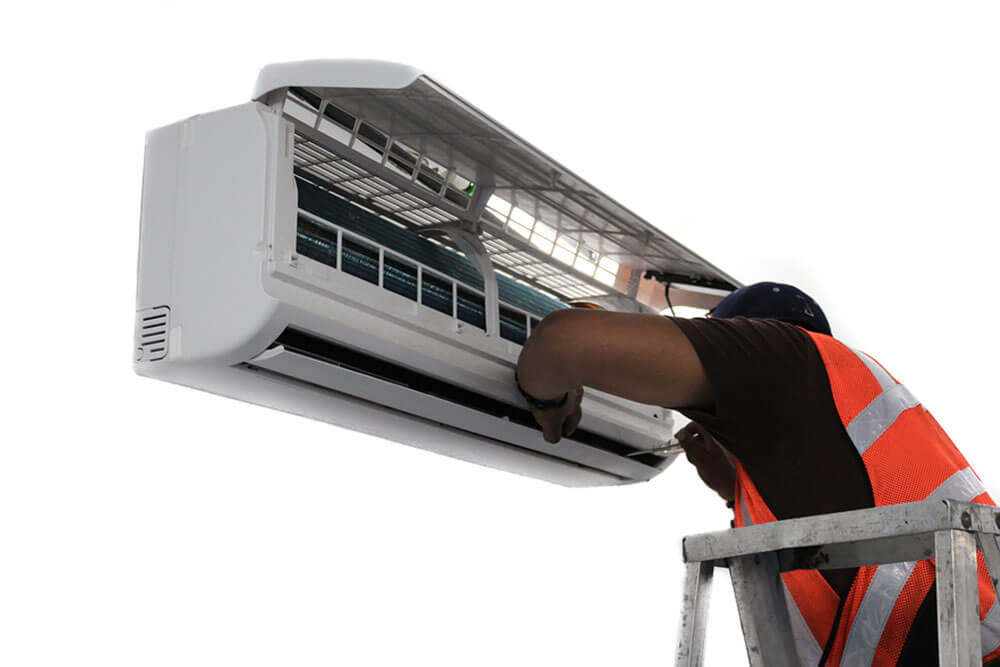To ensure that everyone in your family will be able to experience optimal comfort at home, you have to pick the right heating and cooling system for the property. Your trusted local heating, ventilating and cooling or HVAC experts take care of installing an energy efficient heating system in your property, and they are also in the best position to help you select the right units to use.
Energy Efficient Heating System To Choose From
If you have already begun exploring your options, then you would already know that there are two basic types to choose from:
A packaged system. Here, the air conditioning system is made up of a single cabinet, typically positioned on the roof, which contains an evaporator, condenser and compressor. In certain units, the air conditioner already includes a natural gas furnace or electric heating coils, so there is no need for a separate furnace inside the property.
Packaged cooling and heating systems are often seen in older homes or any property where space is limited. For these applications, the packaged unit can function just fine.
A split system (also referred to as a multi-split system, ductless system, or split-ductless system). With this type, there are two parts instead of a single cabinet (hence the term “split”).
The indoor cabinet can often be found in the house’s attic or a closet, and contains the evaporator (it can also include a furnace or the indoor part of a heat pump). The outdoor cabinet, typically placed on a concrete slab outside the house, contains the condenser and compressor.
The indoor and outdoor units are then connected by a refrigerant line.
For many homeowners today, a split or ductless system is the more popular (and logical) choice.
Why people are going ductless
The main advantages of using split or ductless systems include:
- The system is simple to install.
Generally, professionals won’t have a hard time introducing this heating system to a home. Split heating systems simply require a three-inch hole through the wall for the conduit between the indoor and outdoor units.
Because the connecting conduits can come in a variety of lengths, there would be no trouble installing the system even if the indoor units and outdoor units need to be placed at quite a distance from each other due to the property’s unique dimensions or structure.
- It won’t compromise your home’s safety.
The small hole created to accommodate the system’s conduit won’t give potential intruders an opportunity to find their way inside the house, which is a possibility with window-mounted and through-the-wall air conditioners.
- It allows greater interior design flexibility.
In terms of systems that can be added onto a piece of property, split systems can be incorporated in a variety of ways that can aesthetically accentuate a particular space. There are floor standing models, while other units have air handlers that can be hung on a wall, suspended from a ceiling, or simply mounted. For models attached high up a wall or ceiling, remote controls can be provided for convenient operation. And indoor models can even come with high tech-looking jackets — they won’t stand out like a sore thumb inside a room.
- It helps improve indoor air quality.
Ductless heating and cooling systems do away with air ducts that must be cleaned out professionally and on a regular basis. Instead, they are designed with multi-stage filtration that can effectively reduce the amount of allergens, dust, bacteria, pollen and other particulates in the air.
A truly energy efficient heating system
Among its benefits, the energy efficiency of a ductless or split system for heating and cooling appeals the most to consumers.
- The system heats or cools individual rooms.
Split systems can have as many as four indoor air-handling units (that’s four rooms or zones) connected to its outdoor unit. There is a separate thermostat for each zone, so it’s possible to heat or cool only the spaces that are currently occupied.
- Because it does not make use of ducts, energy losses are significantly reduced.
The absence of ducts means that there is less energy lost. Such losses (which are typical occurrences in the ductwork of central forced air systems) can account for over 30% of energy consumption for conditioning a space. This is especially true if the ducts are found in unconditioned spaces like the attic.
Thanks to this energy efficiency, homeowners can keep their monthly energy bills in control and save a significant amount of money on utilities. What’s more, they can become eligible for utility rebates or tax credits when they have a ductless system installed.
And as an added bonus, the chemistry and technology involved in the use of ductless systems leads to reduced damage to the environment. Split systems use R410A, a refrigerant known for zero ozone depletion potential.
To save costs, conserve energy, and relish the complete comfort of your home, all it takes is to get in touch with the right HVAC professionals to install, maintain, and repair your ductless or split heating and cooling system. Ventwerx caters to homeowners in the San Jose, CA and Santa Clara County areas.
If you’re looking for an energy efficient ductless HVAC system contact Ventwerx today and start saving!



